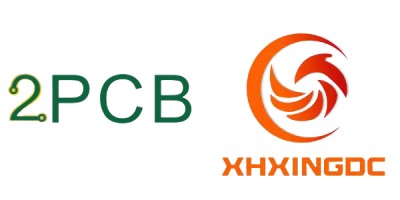Anti-interference problem is a very important link in modern circuit design, which directly reflects the performance of the entire system and the reliability of work. For PCB engineers, anti-interference design is the key and difficult point that everyone must master.
The presence of interference in PCB boards
In actual research, it was found that there are four main aspects of interference in PCB board design: power supply noise, transmission line interference, coupling and electromagnetic interference (EMI).
1. Power supply noise
In high-frequency circuits, the noise contained in the power supply has a particularly obvious impact on high-frequency signals. Therefore, the power supply is first required to be low-noise. Here, a clean ground and clean power supply are equally important.
2. Transmission line
There are only two types of transmission lines that can appear in PCB: strip lines and microwave lines. The biggest problem with transmission lines is reflection. Reflection will cause many problems. For example, the load signal will be the superposition of the original signal and the echo signal, making signal analysis more difficult. ;Reflections cause return loss (return loss), which has as serious an impact on the signal as additive noise interference.
3. Coupling
The interference signal generated by the interference source causes electromagnetic interference to the electronic control system through a certain coupling channel. The coupling method of interference is nothing more than acting on the electronic control system through wires, spaces, public lines, etc. After analysis, there are mainly the following types: direct coupling, common impedance coupling, capacitive coupling, electromagnetic induction coupling, radiation coupling, etc.
4. Electromagnetic interference (EMI)
Electromagnetic interference EMI has two types: conducted interference and radiated interference. Conducted interference refers to the coupling (interference) of signals on one electrical network to another electrical network through a conductive medium. Radiated interference means that the interference source couples (interferes) its signal to another electrical network through space. In high-speed PCB and system design, high-frequency signal lines, integrated circuit pins, various connectors, etc. may become sources of radiation interference with antenna characteristics, which can emit electromagnetic waves and affect other systems or other subsystems within the system. normal work.
PCB and circuit anti-interference measures
The anti-interference design of printed circuit boards is closely related to the specific circuit. Next, we will only explain some common measures for PCB anti-interference design.
1. Power cord design
According to the size of the printed circuit board current, try to increase the width of the power line to reduce the loop resistance. At the same time, make the direction of the power line and ground wire consistent with the direction of data transmission, which will help enhance the anti-noise capability.
2. Ground wire design
The principles of ground wire design are:
(1) Separate digital ground and analog ground. If there are both logic circuits and linear circuits on the circuit board, they should be kept as separate as possible. The ground of the low-frequency circuit should be grounded in parallel at a single point as much as possible. If there are difficulties in actual wiring, it can be partially connected in series and then grounded in parallel. High-frequency circuits should be grounded at multiple points in series. The ground wire should be short and flat. Try to use a large-area grid-shaped ground foil around high-frequency components.
(2) The grounding wire should be as thick as possible. If the ground wire is very thin, the ground potential will change with the change of current, which will reduce the noise immunity performance. Therefore, the ground wire should be thickened so that it can pass three times the allowable current of the printed board. If possible, the ground wire should be above 2~3mm.
(3) The ground wire forms a closed loop. For printed boards that are only composed of digital circuits, most of the ground circuits arranged in group loops can improve noise immunity.
3. Decoupling capacitor configuration
One of the common practices in PCB design is to configure appropriate decoupling capacitors at various key parts of the printed board.
The general configuration principles of decoupling capacitors are:
(1) Connect an electrolytic capacitor of 10~100uf across the power input end. If possible, it is better to connect more than 100uF.
(2) In principle, each integrated circuit chip should be equipped with a 0.01pF ceramic capacitor. If the printed board clearance is not enough, a 1 ~ 10pF capacitor can be arranged for every 4 to 8 chips.
(3) For devices with weak noise immunity and large power supply changes when turned off, such as RAM and ROM storage devices, a decoupling capacitor should be directly connected between the power line and the ground line of the chip.
(4) The capacitor leads cannot be too long, especially high-frequency bypass capacitors cannot have leads.
4. Methods to eliminate electromagnetic interference in PCB design
(1) Reduce loops: Each loop is equivalent to an antenna, so we need to minimize the number of loops, the area of the loops, and the antenna effect of the loops. Ensure that the signal has only one loop path at any two points to avoid artificial loops and use the power layer as much as possible.
(2) Filtering: Filtering can be used on both power lines and signal lines to reduce EMI. There are three methods: decoupling capacitors, EMI filters, and magnetic components.
(3) Shielding.
(4) Reduce the speed of high-frequency devices as much as possible.
(5) Increasing the dielectric constant of the PCB board can prevent high-frequency parts such as transmission lines close to the board from radiating outward; increasing the thickness of the PCB board and minimizing the thickness of the microstrip lines can prevent the overflow of electromagnetic wires and also prevent radiation.

